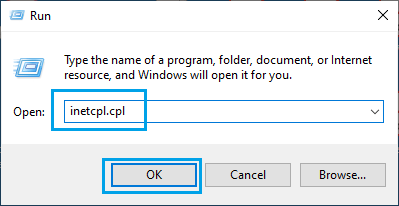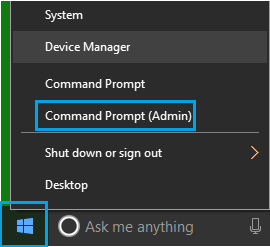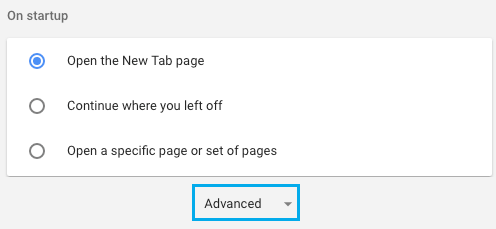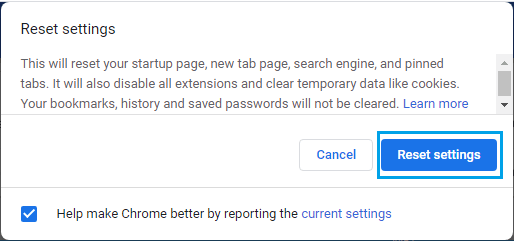If you get the message “Unable to connect to proxy server” on your computer, here are the steps to fix this error in Windows 10.

Cannot connect to proxy server in Windows 10
If you see the error “Cannot connect to proxy server” in Windows 10 , the reason is usually due to incorrect settings in the proxy settings on your computer.
If you are using a Proxy or VPN server, this error can be fixed by making the necessary corrections to the VPN settings in your computer.
If you are not using a proxy server (VPN), you can fix this error by disabling the option to use proxy settings on your PC and scanning your computer for malware.
>Apart from Faulty Proxy Settings, this error can also be caused by network and browser related issues.
1. Disable proxy settings
If you are not using a proxy server or VPN, you should be able to fix the error by disabling proxy settings on your computer.
1. Open Settings and click the Network & Internet tab.
2. On the next screen, scroll down and click Proxy in the left pane. In the right pane, scroll down and uncheck Use a proxy server.

Make sure the ‘Address’ and ‘Port’ fields in the ‘Manual Proxy Configuration’ section are empty.
After disabling the Proxy server, open the web browser on your computer and see if you can connect to the Internet.
2. Reset Internet Options
The unable to connect to proxy server error in Windows 10 can also be caused by a change in your Internet settings.
1. Right-click the Start button and click Run.

2. In the Run Command window, type inetcpl.cpl and click OK.

3. On the Internet properties screen, select the Advanced tab and click the Reset button.

>4. On the next screen, check the Delete personal settings option and click Reset.

Restart your computer and see if you still get the error “Unable to connect to proxy server” on your computer.
3. Clear browser cache
Clear the browser cache on your computer to rule out the possibility of the web browser displaying old cached web pages.
1. Open Chrome browser > click the 3-dot menu icon > More tools > Clear browsing data.

2. On the next screen, set Always as the ‘Time Range’ > check Browsing history, Cookies and other site data, cached images and file options and click the Clear data button.

After clearing the browser cache ón, see if you can connect to the internet.
4. Flush DNS and reset IP
1. Right-click the Start button and click Command Prompt (Admin).

2. At the command prompt screen, type the following commands one by one and press the Enter key after each command.
- ipconfig /flushdns
- netsh int ip reset
- netsh winsock reset
After running the above commands, restart your computer.
5. Reset Chrome Browser
1. Open Chrome Browser on your computer.
2. Click the menu icon 3-dot icon and select the Settings option from the dropdown menu.
3. On the Settings screen, scroll down and click Advanced.

4. On the next screen, scroll down and click Restore settings to their original default, which it is located under ‘Reset and cleanup’.
5. In the confirmation pop-up, click the Reset Settings button to confirm.

6. Scan your computer for harmful programs
Google’s Chrome browser comes with a built-in tool that can help you find and remove harmful programs on your computer.
1.Open Chrome > click the 3-dot menu icon > Settings Settings > Advanced.
2. Scroll down and click the Clean up computer option located in the “Reset and clean up” section.

3. Then click Scan to let Chrome Browser start looking for harmful programs on your computer.

If Chrome finds programs harmful or suspicious, click Remove and follow the instructions to remove the program.
You can also use the Antivirus program installed on your computer or use Windows Defender offline scan to check your computer on scans for malware and harmful programs.
7. Check the proxy server settings
If you are using a proxy server or VPN to connect to the Internet, check the VPN settings on your computer and make any necessary corrections.
1 . Open Settings and click Network & Internet.
2. On the next screen, click VPN in the left pane. In the right pane, click VPN Name > Advanced.

3. On the next screen, make sure your name is , address and other required details are correct. Otherwise, click the Edit button.

4. On the next screen, enter the correct VPN name and address .
After correcting your proxy settings, you should be able to connect to the Internet using the VPN settings on your computer.
- How to fix “Unable to access” error to this site” in Chrome
- Google Chrome has stopped working: how to fix it?
.
